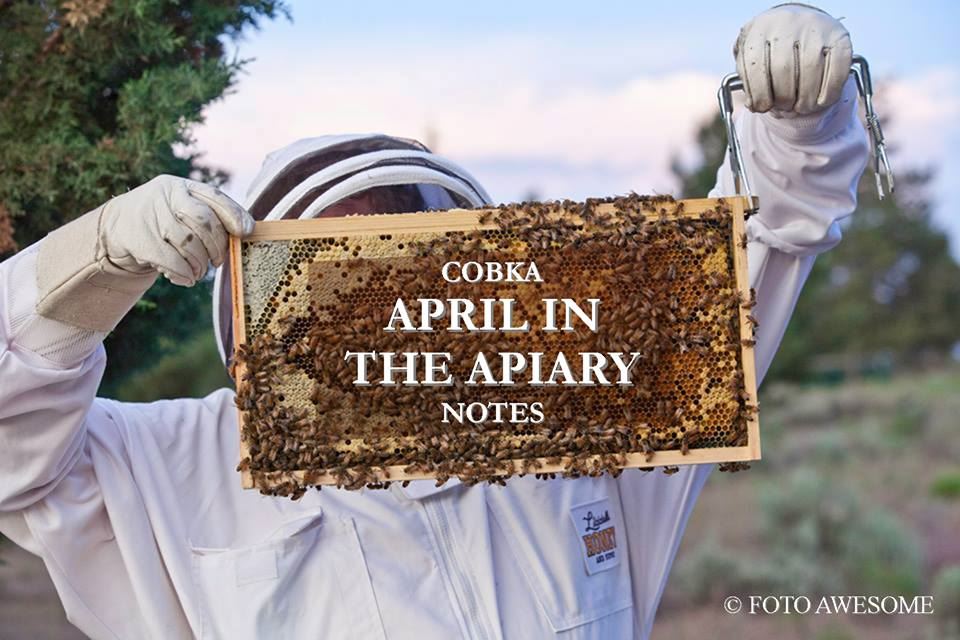|
For the last 3 months, we’ve been telling you to clean up your equipment and apiary, dream about and plan for the upcoming season, get everything ready, but leave the poor bees alone. Now, however, is the time to start getting active as beekeepers.
Feeding: Earlier in the month, 1:1 sugar syrup and pollen patties can help stimulate brood rearing. Also, if we get an extended cold snap, or crummy wet cold weather, with lots of brood to take care of, the hive can eat through a significant amount of food stores. Once again, in that case it doesn’t hurt to feed 1:1 syrup if necessary. If for some reason (location, location , location) you are not seeing much pollen coming in, a pollen replacement or pollen patty can help tide them over during a pollen dearth.
Inspection: On one of the earlier warm days in April, each hive should be opened up and evaluated. Is it queenright? How is her pattern? It is difficult to get queens until May, however, if the queen isn’t doing the job, requeening might be the ticket. Might be a good time to cull some of the older frames and replace with shiny new ones.
Swapping upper and lower boxes: If the brood is all in the upper box (for Langstroth hives) you can consider swapping the upper and the lower hive body. As the bees seem to like to move upwards, this opens up (the perception of) more real estate for them to fill. You should, however, avoid swapping the boxes if the brood chamber is split between the boxes, as half of the brood could perish if there is a cold snap and the bees need to decide which half to incubate.
Mites: Whether or not you are thinking about treating for mites, you should do a mite count. Sugar shake or alcohol wash are the best methods. This is the time that both the bee population and the mite population are booming. Anything we can do to give our bees an advantage over the mites will help during the season. The numbers vary, however counts over 6 are considered high for this time of year. I generally use oxalic acid if I can treat earlier in the month (before the brood rearing gets going gangbusters) or MAQS later in the month when there is lots of capped brood. Remember, when there is a lot of brood, most of the mites (2/3 or so) are in the capped brood. MAQS seems to be a bit harder on the bees, but does kill the mites in the capped cells. Oxalic acid seems a bit easier on the bees, but only kills the phoretic mites. Other treatments may be effective for you as well.
Swarming: As the month goes on, you need to be attentive for swarming especially if you have a good strong colony, with some great forage available. If you want to avoid swarms (some folks let their bees swarm, others try very hard to avoid it), you want to keep ahead of them. Make sure they always have room to grow, both with respect to honey, and also brood. Remove swarm cells every 5 to 7 days (even that one hiding down in the corner of the 3rd frame)
Splits: With the build up, if you’re trying to reduce swarming, or want to increase your colonies, later in the month is a good time to split the hive. You can either let the queenless part of the colony create a new queen (remember it can set that part back even further as she has to mature, mate and start laying) or you can purchase a queen and install her into the queenless part.
New bees: If you’ve ordered bees, they should be arriving around the end of the month. Make sure your equipment and location are ready before they arrive. After installation, feed them 1:1 syrup for a month or so to help get them going.
Spring Surveys: Our club encourages our members to maintain hive logs and to participate in annual surveys that aim to aid honey bees and beekeepers. Both the PNW Honey Bee Survey & National Bee Informed Partnership Annual Survey are now open.
Swarm Call List: If you would like to be added to the 2017 swarm call list please note that you will need to be logged into your account to complete the process. Let us know if you need assistance.
Enjoy the change of seasons and the cycle of life.
Allen Engle
